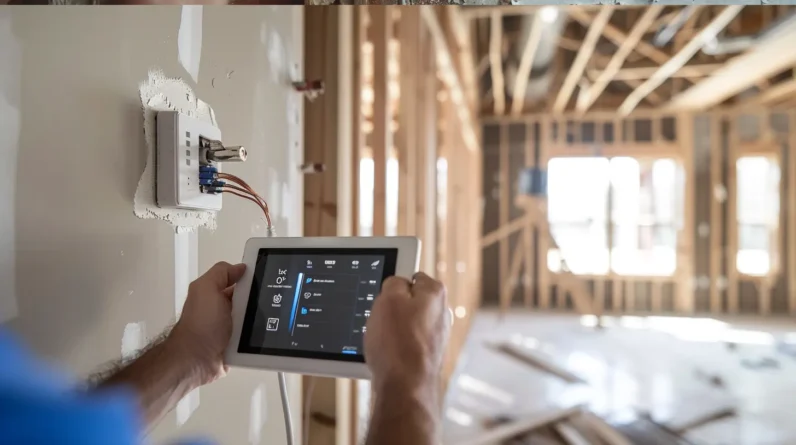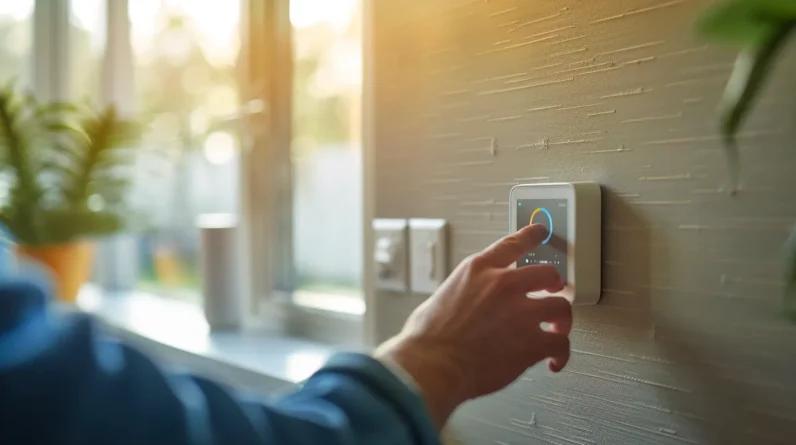
We’re witnessing a significant shift in the way we live and work at home, thanks to the integration of smart devices that not only streamline our daily routines but also optimize energy consumption. With smart thermostats reducing energy usage by 15-20% and smart lighting using 90% less energy, it’s clear that these devices are transforming home efficiency. By automating tasks, enhancing productivity, and promoting sustainable living, smart devices are revolutionizing the way we live. As we explore the capabilities of these devices, we’re likely to uncover even more innovative ways to boost efficiency and productivity in our homes.
Smart Home Essentials
As we commence on creating a smart home, it is essential to start with the fundamentals – the devices that will form the backbone of our energy-efficient abode. We begin by incorporating smart thermostats, which can reduce energy consumption by 15-20%. We also opt for ENERGY STAR certified smart lighting fixtures, using 90% less energy than traditional bulbs and lasting 15 times longer. Smart plugs enable remote control and scheduling of non-smart devices, minimizing phantom loads.
Integrating smart appliances with connected functionality promotes sustainable living. Smart home energy management systems (SHEMS) offer customizable solutions for scheduling and controlling various devices, optimizing energy consumption and leading to potential utility savings. These devices form the core of our smart home technologies, driving energy efficiency and savings.
Enhancing Productivity With Technology
By harnessing the power of smart devices, we can transform our living spaces into productivity hubs that enhance our work-life balance. Smart home technology plays a significant role in improving our productivity. For instance, smart lighting systems can be adjusted to create ideal working conditions, while smart thermostats maintain a perfect temperature range that boosts our creativity and focus. We can also utilize voice commands to manage our schedules, set reminders, and control other smart devices.
Smart locks and smart plugs enables us to automate and schedule tasks, ensuring a secure and efficient home office environment. With remote control and automated scheduling, we can minimize distractions and maximize our productivity. By leveraging these smart devices, we can create a seamless and organized workflow.
Boosting Energy Efficiency at Home
Numerous smart devices can greatly boost energy efficiency in our homes. By integrating smart home energy management systems (SHEMS) with the Internet of Things, we can optimize energy usage and scheduling, resulting in average annual savings of $131 to $145. Smart thermostats can reduce energy consumption by 15-20% by automatically adjusting the temperature based on occupancy and user schedules. Additionally, smart light bulbs use up to 90% less energy than traditional incandescent bulbs and have a longer lifespan.
Energy monitoring features in smart home systems enable us to identify areas of inefficiency and reduce energy use. By harnessing the power of smart devices, we can create a more energy-efficient home that not only saves us money but also reduces our environmental footprint.
Smart Devices for Daily Convenience
Beyond the energy-saving benefits of smart devices, they also bring a new level of convenience to our daily lives. We can now automate and adjust various aspects of our homes with ease, thanks to smart technology. Smart Home Devices, such as voice assistants, enable us to set reminders, organize tasks, and access information quickly. Smart plugs allow us to convert non-smart appliances into connected devices, giving us remote control and scheduling capabilities to save energy.
Smart light bulbs can adjust brightness and color temperature to boost productivity, while smart thermostats automate heating and cooling adjustments based on our schedules and preferences. By integrating these devices, we can create an energy-efficient and convenient living space that simplifies our daily routines.
Investing in a Smarter Future
As we look to the future, integrating smart devices into our homes isn’t just a convenience; it’s an investment that can lead to significant long-term savings. By adopting smart home technology, we can reduce our energy usage and lower our utility bills. Smart thermostats, for instance, can cut energy consumption by 15-20%, resulting in annual savings of $131 to $145. Smart appliances, such as ENERGY STAR certified models, also promote sustainable living while enhancing convenience.
Home automation systems can reduce carbon emissions by approximately 12.78%, contributing to broader environmental sustainability initiatives. With real-time monitoring and management, we can optimize energy use without sacrificing comfort, making smart devices a worthwhile investment in our homes’ efficiency and productivity.
Conclusion
As we look to the future, it’s clear that smart devices are revolutionizing the way we live. By embracing this technology, we can create a more efficient, productive, and convenient home. A staggering 47% of households in the US now use smart speakers, with this number expected to rise. This shift towards smart living is transforming our daily routines, making it easier to manage our time, energy, and lives – paving the way for a smarter, more streamlined tomorrow.







